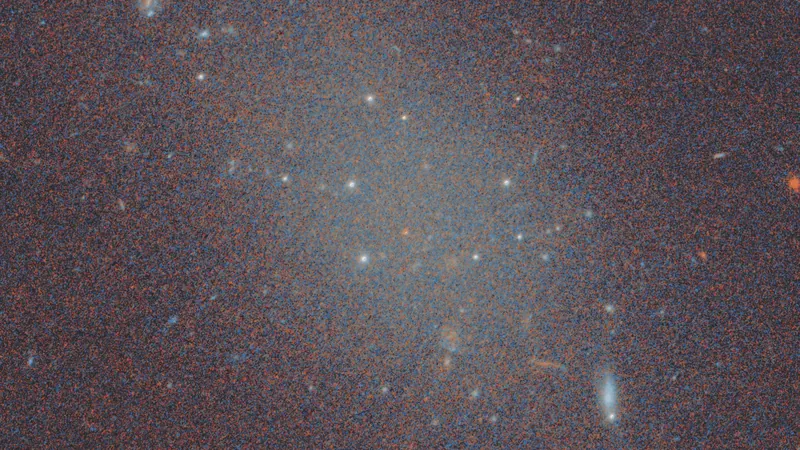
Astronomers Discover Mysterious Galaxy Lacking Dark Matter!
2025-04-18
Author: Lok
A Troubling Discovery in the Cosmos
In a groundbreaking revelation, astronomers have uncovered a ghostly galaxy that surprisingly seems to be devoid of dark matter – the enigmatic substance believed to be the universe's backbone. This discovery raises more questions than answers, as finding a galaxy without dark matter is akin to spotting a shadow without its source!
Meet FCC 224: The Latest Cosmic Enigma
Introducing FCC 224, the latest addition to a perplexing group of so-called 'ultradiffuse galaxies.' These galaxies, which are roughly the size of our Milky Way but astonishingly sparse in stars, have intrigued scientists for over a decade. Located on the outskirts of the Fornax Cluster, 65 million light-years away, FCC 224 turns the traditional understanding of galaxy formation on its head.
Why is FCC 224 So Special?
Discovered in 2024, FCC 224 is characterized by about a dozen tightly bound clusters of stars—a rich population remarkably uncommon for its size. Normally, such stellar abundance would be associated with larger, dark-matter-rich galaxies, yet here, the mysterious substance appears to be missing! This peculiar scenario hints that FCC 224 might not be an isolated anomaly; it could signal the existence of a new class of dwarf galaxies.
A Challenge to Cosmological Norms
Maria Buzzo, a doctoral candidate from Swinburne University of Technology, states, "No existing galaxy formation model can currently explain how this galaxy came to be." An analysis using data from the Keck Observatory revealed that the movement of star clusters within FCC 224 is slower than expected, signaling the absence of the strong gravitational influence dark matter would typically provide.
Connecting the Dots with Other Dark Matter-Depleted Galaxies
Further investigations led by Yimeng Tang at UC Santa Cruz draw intriguing parallels between FCC 224 and two similar dark-matter-deficient galaxies found in the NGC 1052 group. These galaxies likely formed as a result of a massive collision between gas-rich galaxies, allowing gas to separate from dark matter, ultimately leading to the creation of multiple dark-matter-free galaxies.
Could FCC 224 Have a Twin?
Excitingly, researchers speculate that FCC 224 could have a 'twin'—a nearby galaxy known as FCC 240, which shares similar characteristics. If future observations confirm this relationship, it would bolster the theory surrounding FCC 224's formation through explosive cosmic collisions.
Taking Star Formation to New Heights
Alternatively, there’s a possibility that FCC 224 emerged from a turbulent, high-energy environment where intense star formation expelled dark matter. This chaotic process could redefine our understanding of dwarf galaxy evolution.
What's Next?
Buzzo notes, "FCC 224 serves as a vital reference point in our quest to identify and explore other dark-matter-deficient galaxies." By expanding our sample size, astronomers hope to refine their grasp of these rare celestial bodies and further understand the pivotal role of dark matter in the grand tapestry of the universe.

 Brasil (PT)
Brasil (PT)
 Canada (EN)
Canada (EN)
 Chile (ES)
Chile (ES)
 Česko (CS)
Česko (CS)
 대한민국 (KO)
대한민국 (KO)
 España (ES)
España (ES)
 France (FR)
France (FR)
 Hong Kong (EN)
Hong Kong (EN)
 Italia (IT)
Italia (IT)
 日本 (JA)
日本 (JA)
 Magyarország (HU)
Magyarország (HU)
 Norge (NO)
Norge (NO)
 Polska (PL)
Polska (PL)
 Schweiz (DE)
Schweiz (DE)
 Singapore (EN)
Singapore (EN)
 Sverige (SV)
Sverige (SV)
 Suomi (FI)
Suomi (FI)
 Türkiye (TR)
Türkiye (TR)
 الإمارات العربية المتحدة (AR)
الإمارات العربية المتحدة (AR)